Aldwell-Schachter Chapter 24
Click on a musical example for playback
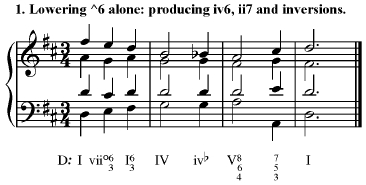
b^6 is the most common tone of the scale to be altered for mixture. Here IV becomes ivb by lowering its third, as a chromatic passing tone.
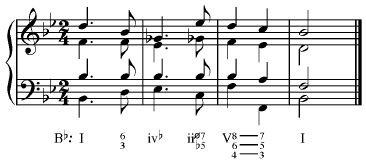
The flattened ^6 is easily approached, but not so easily left. In measure 2, the ii7 following the ivb must be half diminished—the g must be flatted—due to the strong influence of the flattened ^6.
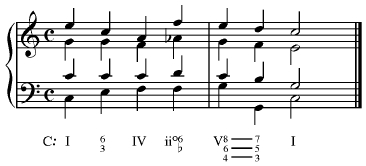
Mixing chords that use flat ^6 and natural ^6 has to be done carefully to avoid cross-relations. Notice that in this example, the natural ^6 of beat 3 moves to a flat ^6 in beat four—although it moves in a different voice, a cross relation does not occur because it is in the same octave.
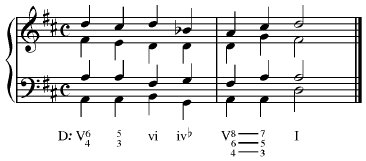
Here we have the dreaded cross-relation. Note that the b-natural in the bass of beat 3 is followed by a b-flat in the soprano of beat 4. Cross-relations are at their most vile when occurring in the outer voices, as here.
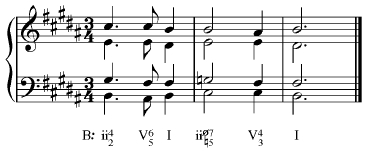
A nice example of a ii7 with mixture. Note that this allowed me to use a voice leading that I wouldn’t have been able to use otherwise: a non-mixed ii7 would have created parallel fifths in the lower voices.
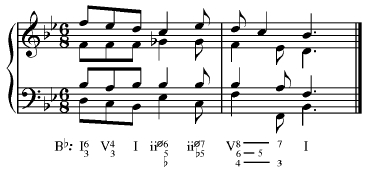
ii65 makes for a very nice mixed chord. Note that the following ii7 has been kept mixed: it would be extremely bad taste to raise ^6 back to the natural. Generally speaking, once ^6 has been lowered, it should move down to ^5 (eventually) and not back up to natural ^6.
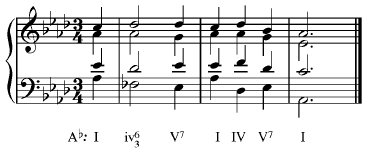
This example demonstrates two points: 1) ii43 can mix just like any ii7 or ii65, and 2) the flattened ^6 can return to the natural form if the flattened ^6 has been allowed its resolution first—note the f-natural in measure 3, following the full resolution on the downbeat.
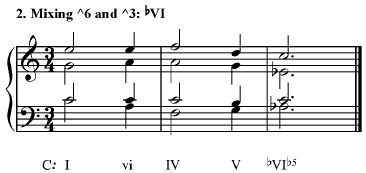
The admixture of ^6 and ^3 in their mixed forms produces bVI, which is one of the most interesting of the chords produced by mixture and one of the most popular. It is especially effective when used in a deceptive cadence, as here.

bVI can produce some insidious cross-relations. Note that in this example there is a fingernails-on-blackboard bit of mixture from first chord to second chord. To make it truly unforgettable, change the opening chord from I to a I63.
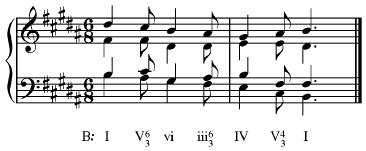
One area in which vi cannot be mixed freely to bVI would be in a descending stepwise scale pattern, as in this and the next example. This is a descending thirds sequence in the first measure—this cannot be mixed, as the next example will make clear.

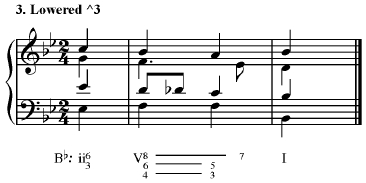
Lowered ^3 usually results as an inflection of the natural scale degree—in this example, it is a chromatic passing tone, part of a cadential 64.
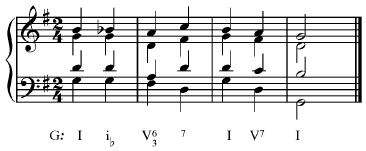
Here, the chromatic passing tone is fully harmonized, on the way to V6, in order to see how the chromatic passing tone can give rise to a mixed tonic triad.
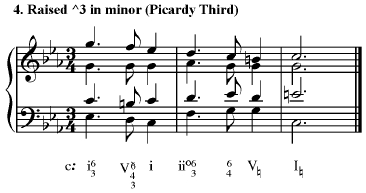
For such a common phrase, its origin is actually unknown. The term is first encountered in 1767, in Jean-Jacques Rousseau’s Dictionnaire de musique. About the only thing that can be said with any certainty is that the practice originated around 1500, but did not become common until after 1550. It was commonly encountered until the end of the Baroque, after which it more or less died out.
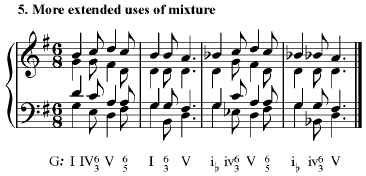
Mixture can be applied to entire phrases. In this example, a phrase is repeated in minor, immediately after major.
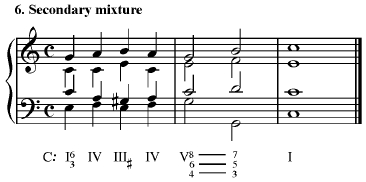
This example borrows a g# from the relative minor. Since this raises ^5, it’s best to avoid #^5 – §^5 in composition. Here a IV precedes and follows the #III, which creates a smooth, neighbor-tone sonority.
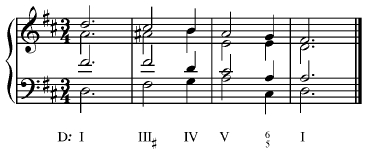
#III acts as a bridge from I to V—this is another typical usage. Note that this was a bit tricky to voice-lead given this soprano; I chose an overlap as the lesser of the various evils that arose.